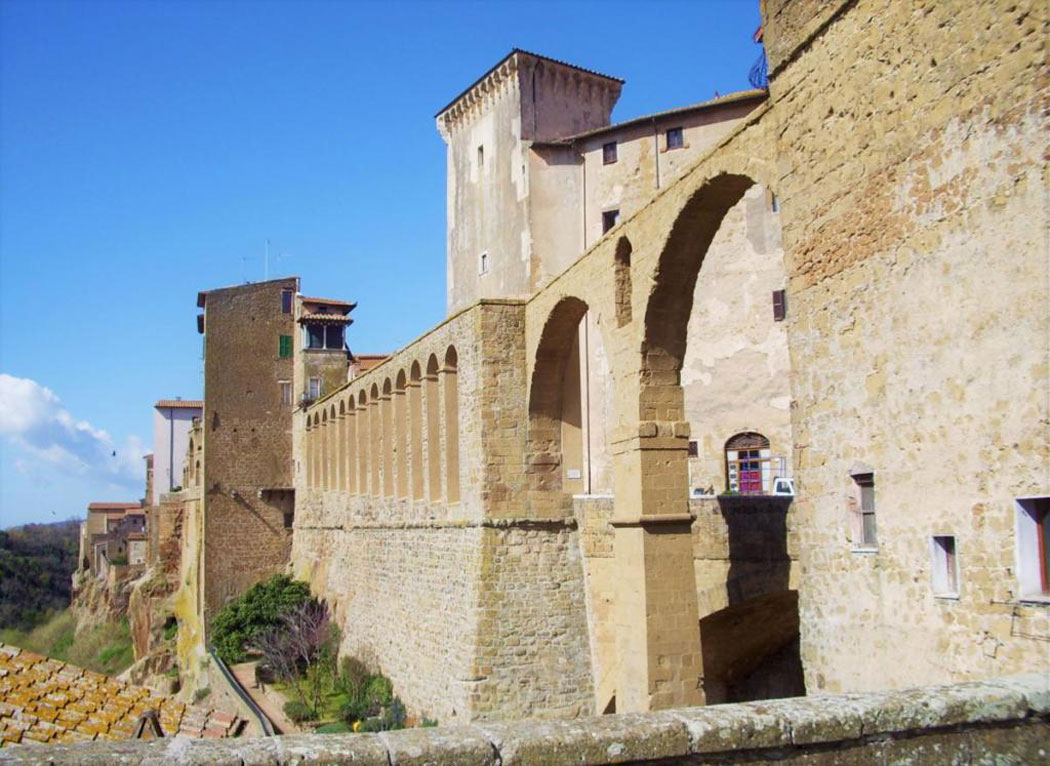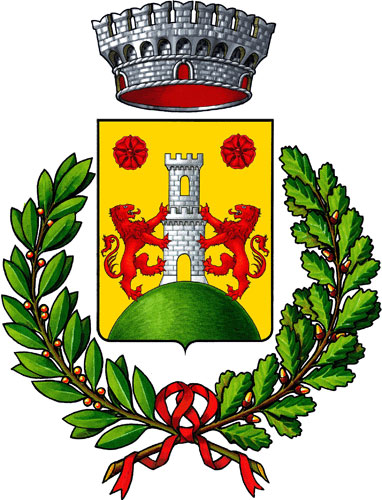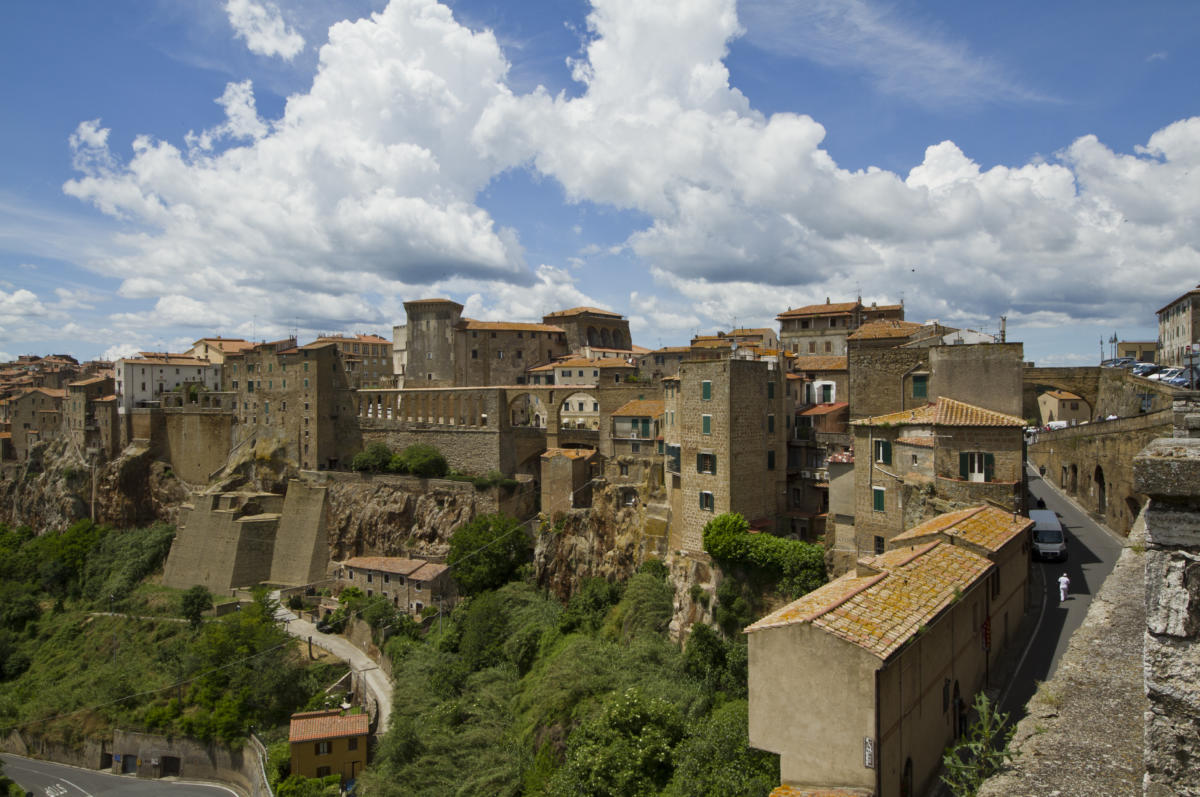

Pitigliano is one of the most fascinating historic villages in Italy, in the heart of the Tuscan Maremma.
Perched on the ridge of a tuff promontory of evocative and wild beauty, the village overlooks the valleys of the Lente, Meleta and Prochio riverlets.
Nicknamed "Little Jerusalem", because since the 16th century it has hosted a large Jewish community within its walls, the town is one of the most important centres of the ‘Tuff Cities’.
According to an ancient legend, the origin of its name comes from two young Romans, Petilio and Celiano, who fled Rome after the theft of Jupiter's golden crown.
They took refuge in the countryside and founded a first community that took its name from the merging of their names, Petiliano, which later became Pitigliano.
Besides the legend, the Pitigliano cliff has an even older history: in fact, the territory, like the whole valley of the Fiora river, was already frequented since the Neolithic time and then in the Copper Age.
But it is with the arrival of the Etruscans that the real history of the town begins. The Etruscans built the famous Vie Cave, ancient communication routes dug by hand in the tuff rock that were used as a communication and defence route for the first villages. There are the necropolises, called the Cities of the Dead, right in Via Cave.
In the thrid century BC, the Etruscans were defeated by the Romans and in Pitigliano there are testimonies of the Roman presence, with farms and villages located on the main roads, especially in the plain in front of the cliff.
After the fall of the Roman Empire, the whole territory underwent Ostrogoth and Byzantine dominations, and then was conquered by the Lombards, in 569. The population sought refuge on the fortified hills leaving the downstream Roman settlements.
The Lombards divided the territory into Lordships and Pitigliano entered the County of Sovana, which was entrusted to their faithful allies, the Aldobrandeschi counts, a noble family of Lombard origin. The Aldobrandeschi were uncontested lords of the Maremma and of Monte Amiata for about half a millennium.
Also in this period, the first monastic foundations arose which resumed trade, creating the basis for the development of agriculture, with the spread of vineyards, chestnut groves, olive groves, water mills and oil mills.
In 1061 Pitigliano was named for the first time in a bull by Pope Nicholas II to the canons of the Sovana Cathedral. In another document of 1188, Pitigliano appears as ‘castro’, that is, a fortified village. Still in 1274, Pitigliano was always one of the major fortresses in the Aldobrandeschi county, in the wars against the Municipality of Orvieto.
In 1293 Anastasia, daughter of Countess Margherita Aldobrandeschi, married Romano Orsini bringing the county of Sovana as a dowry and the county seat was transferred to Pitigliano. The Orsini ruled the County of Pitigliano for centuries, defending it from the continuous attempts at submission by Siena and Orvieto first, and then by Medici Florence.
In 1466, Pitigliano gained strength with the coming to power of Niccolò III Orsini, mercenary captain in the service of the major Italian states. With him the town was enriched with Renaissance monuments on which artists like Antonio da Sangallo, Baldassare Peruzzi and Anton Maria Lari worked.
It was only in 1574 that Niccolò IV Orsini ceded the fortress to the Medici and in 1604 Pitigliano was annexed to the Grand Duchy of Tuscany, ceded by Count Gian Antonio Orsini to pay off his debts. However, the Medici were not interested in the
fate of the city, which soon fell into decline.
In this period, however, Pitigliano began to welcome a large number of Jews, who felt safe in the village and in 1643 the Medici foiled an attempted occupation by the papal troops.
Then, in 1737, the year in which the Grand Duchy of Tuscany passed to the Lorena family, a noble family of French origins, Pitigliano experienced a slow economic and cultural recovery.
The period of the Lorraine dominion was for all of Tuscany, including Pitigliano, an enlightened period, starting from the government of Pietro Leopoldo, who reformed the judicial system by abolishing the death penalty, an innovation of no small importance for the period.
This period lasted until the last Grand Duke Leopold II, who built one of the first railways, organized the cadastre and reclaimed the Maremma.
Apart from an interruption of the Lorraine sovereignty during the Napoleonic period, which lasted until 1814, Leopold II reigned until the entry of the Tuscan territory into the nascent Italian Unitary State.
It is important to remember also that thanks to its importance, the Grand Duchy of Tuscany hosted the capital of the Kingdom in Florence for five years, pending the transfer to Rome which took place in 1870.
Pitigliano is also famous for its wine production. The vineyards of this area, fertilized by volcanic tuff and a millennia-old humus, produce one of the finest Italian white wines: Bianco di Pitigliano, among the first to boast the DOC denomination.








Follow us